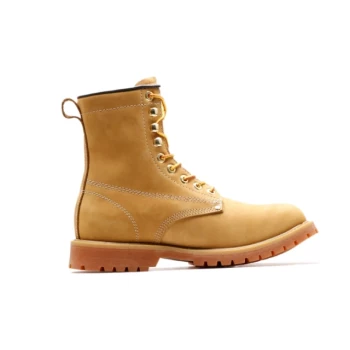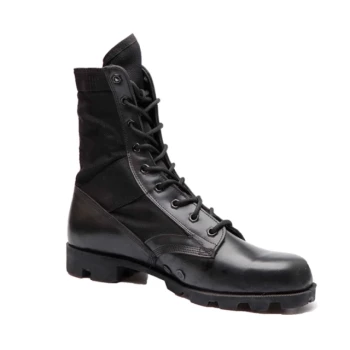Waterproof membranes in boots are designed to keep feet dry by preventing water ingress while allowing sweat to escape, but they come with several limitations. These include reduced breathability, leading to sweaty and uncomfortable feet in warm conditions, and a lack of protection for the boot's upper, which can degrade over time. Additionally, waterproof boots can be heavy, bulky, and expensive, especially those with advanced features to mitigate these drawbacks. The choice between waterproof and non-waterproof boots depends on the climate and intended use, as each has trade-offs in comfort, durability, and performance.
Key Points Explained:
-
Limited Breathability
- Waterproof membranes, while effective at blocking external moisture, often restrict airflow, leading to increased sweating and discomfort, especially in warm or humid conditions.
- Materials like PTFE (e.g., Gore-Tex) allow moisture vapor to escape but at a slower rate than non-waterproof fabrics, making them less ideal for hot weather or high-intensity activities.
-
No Protection for the Boot's Upper
- The membrane only prevents water from reaching the foot but does not shield the boot's outer material (e.g., leather, synthetic fabrics) from water damage.
- Prolonged exposure to moisture can weaken the upper, leading to cracking, stiffness, or mold growth, necessitating regular conditioning or treatments.
-
Weight and Bulk
- Waterproof boots often incorporate thicker materials or additional layers (e.g., rubber, neoprene) to enhance durability, making them heavier and less flexible.
- This can cause fatigue during long hikes or extended wear, reducing overall comfort.
-
Cost Considerations
- High-end waterproof boots with advanced membranes (e.g., Gore-Tex) or features like improved breathability are significantly more expensive than non-waterproof alternatives.
- Budget-friendly waterproof options may compromise on comfort or durability, leading to a shorter lifespan.
-
Trade-offs in Comfort and Performance
- While waterproofing is essential for wet environments, it may not be necessary for dry or warm climates, where breathability is prioritized.
- Non-waterproof boots are lighter and more breathable but offer less protection in rainy or muddy conditions.
-
Maintenance Requirements
- Waterproof membranes can lose effectiveness over time due to dirt, sweat, or wear, requiring periodic cleaning and reapplication of water-repellent treatments.
- Neglecting maintenance can lead to premature failure of the membrane, reducing its waterproofing capabilities.
Have you considered how often you'll encounter wet conditions versus the need for breathability when choosing your next pair of boots? These membranes are a testament to the delicate balance between protection and comfort in outdoor footwear.
Summary Table:
| Limitation | Impact |
|---|---|
| Limited Breathability | Increased sweating and discomfort in warm/humid conditions. |
| No Upper Protection | Outer material degrades over time, requiring regular maintenance. |
| Weight and Bulk | Heavier, less flexible, and can cause fatigue during prolonged use. |
| Higher Cost | Advanced waterproofing features increase price, budget options may lack durability. |
| Maintenance Needs | Membranes require cleaning and re-treatment to maintain effectiveness. |
Choosing the right boots for your needs is crucial for comfort and performance. At 3515, we specialize in manufacturing high-quality footwear tailored to diverse environments—whether you need waterproof protection for wet climates or breathable designs for warmer conditions. Our extensive range includes durable boots for distributors, brand owners, and bulk buyers, ensuring you get the perfect balance of functionality and comfort.
Why choose us?
- Custom Solutions: We adapt to your specific requirements, from materials to design.
- Scalable Production: Ideal for bulk orders with consistent quality.
- Expertise: Decades of experience in crafting footwear for all terrains and uses.
Let’s help you find the ideal footwear solution—contact our team today to discuss your needs!
Related Products
- Classic Leather Derby Dress Shoes Wholesale & Custom Manufacturing
- Wholesale Classic Leather Lace-Up Ankle Boots for Brand Manufacturing
- Durable Goodyear Welt Leather Work Boots for Wholesale & Private Label
- Durable Leather Work Boots Wholesale Manufacturer & Custom Factory
- Wholesale Durable 6-Inch Work Boots | Custom & Private Label Manufacturer
People Also Ask
- What are the advantages of leather work boots for farm work? Durable, Protective & Comfortable Footwear
- What is the importance of understanding different types of leather for shoes? Choose the Right Leather for Style & Durability
- How can the lifespan of work shoes be extended? Pro Tips for Long-Lasting Footwear
- What are the main differences between all-leather boots and Cordura-leather hybrid boots?
- Why are full-grain leather boots recommended for higher-level equestrian sports?














